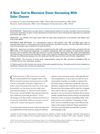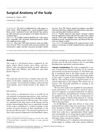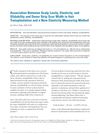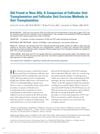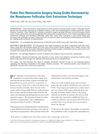The Association Between Scalp Laxity, Elasticity, and Glidability and Donor Strip Scar Width in Hair Transplantation: A New Elasticity Measuring Method
July 2017
in “
Hair transplant forum international
”
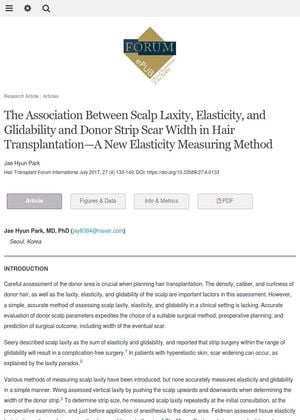
TLDR Scalp laxity, elasticity, and glidability are important in hair transplants and can predict scar width at the donor site.
The study conducted by Jae Hyun Park, MD, PhD, in 2017, reviewed the medical charts of 88 patients (54 men, 34 women; mean age 31.1 years, range 21-57) who underwent strip surgery for hair transplantation. The study aimed to evaluate the clinical importance of measuring scalp laxity, elasticity, and glidability, and their relationship with donor scar width. The results showed that the average laxity was 19.59mm, the average elasticity was 8.95mm, and the average glidability was 10.58mm. The average scar width was 2.7mm at the center, 3.18mm on the left side, and 3.11mm on the right side. The study found a significant positive correlation between scar width and laxity, elasticity, and incision length. Patients with higher scalp elasticity (10mm or more) had wider scars. The study concluded that scalp laxity, elasticity, and glidability have great clinical importance in strip method hair transplantation, and the novel method of measuring elasticity helps predict the degree of donor site scar widening.
